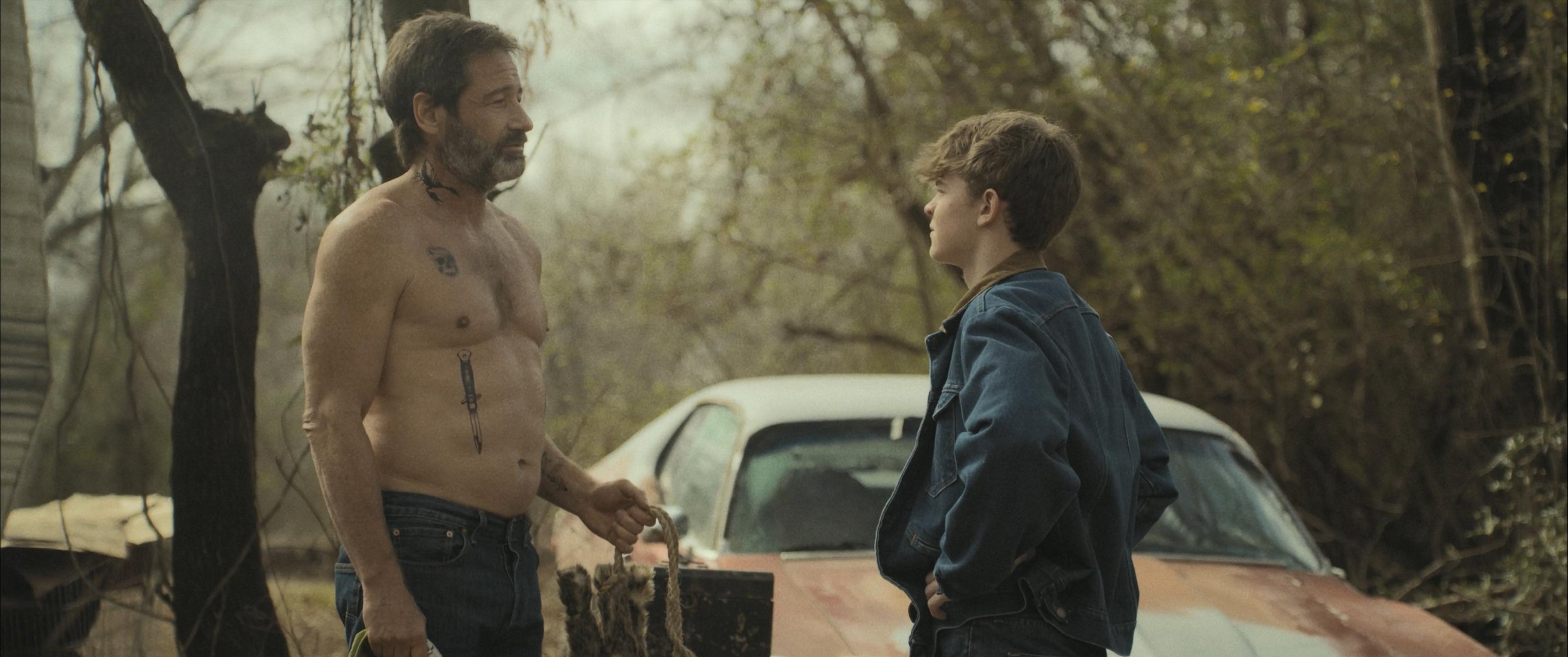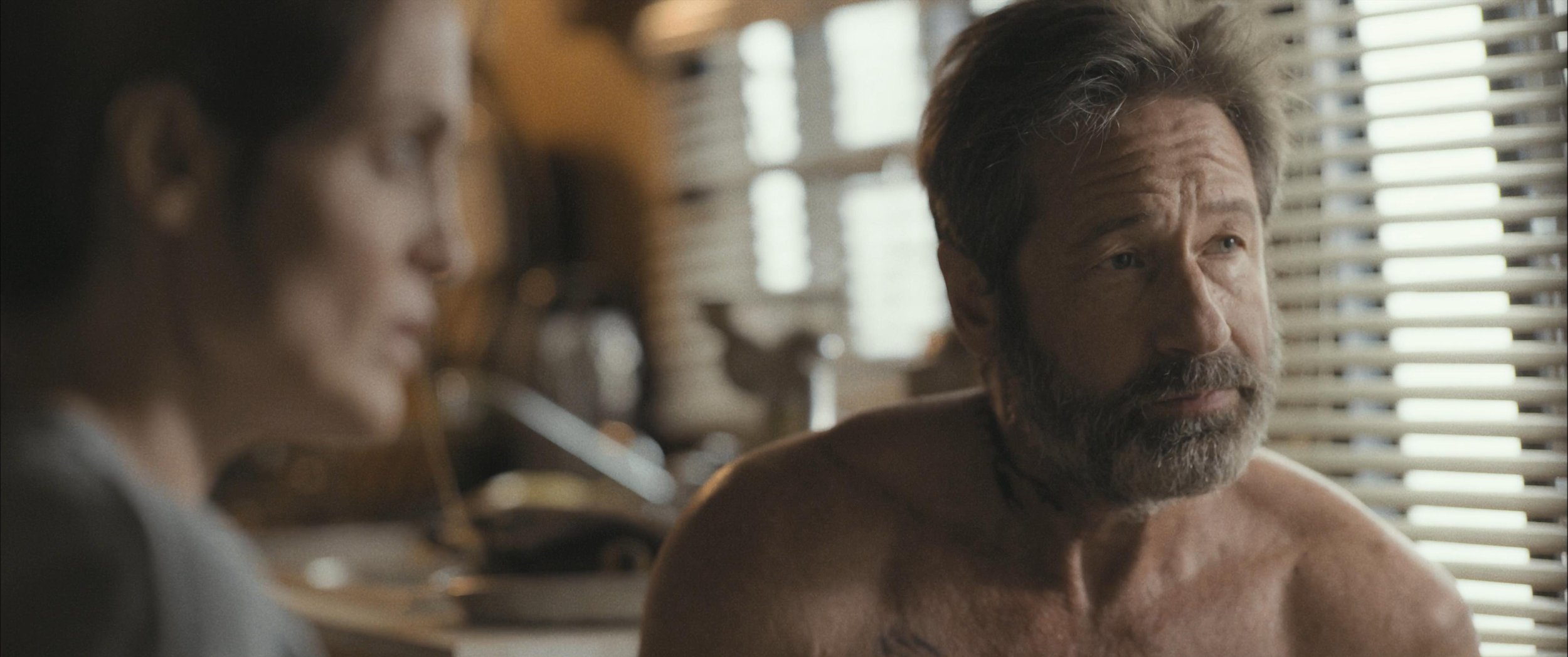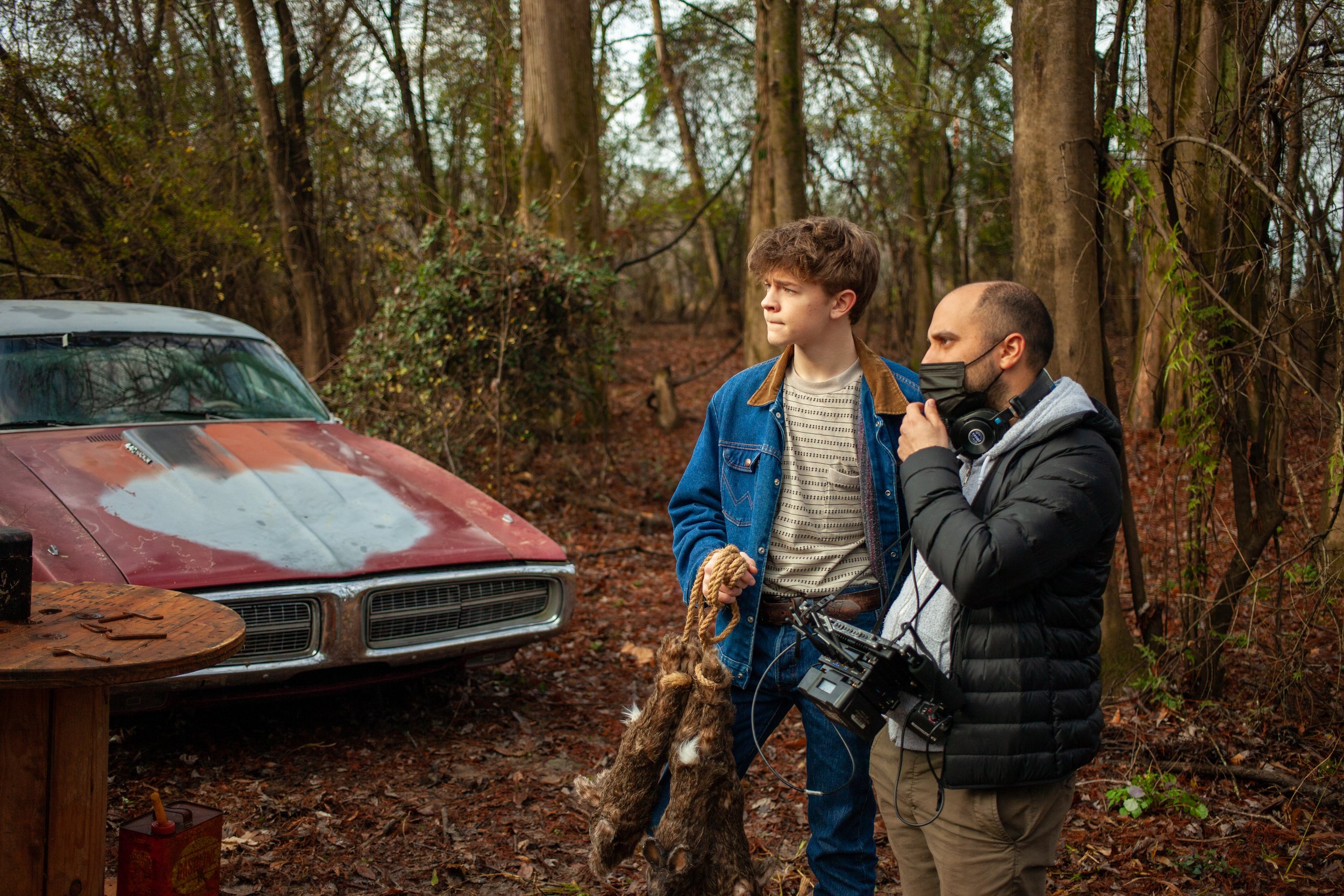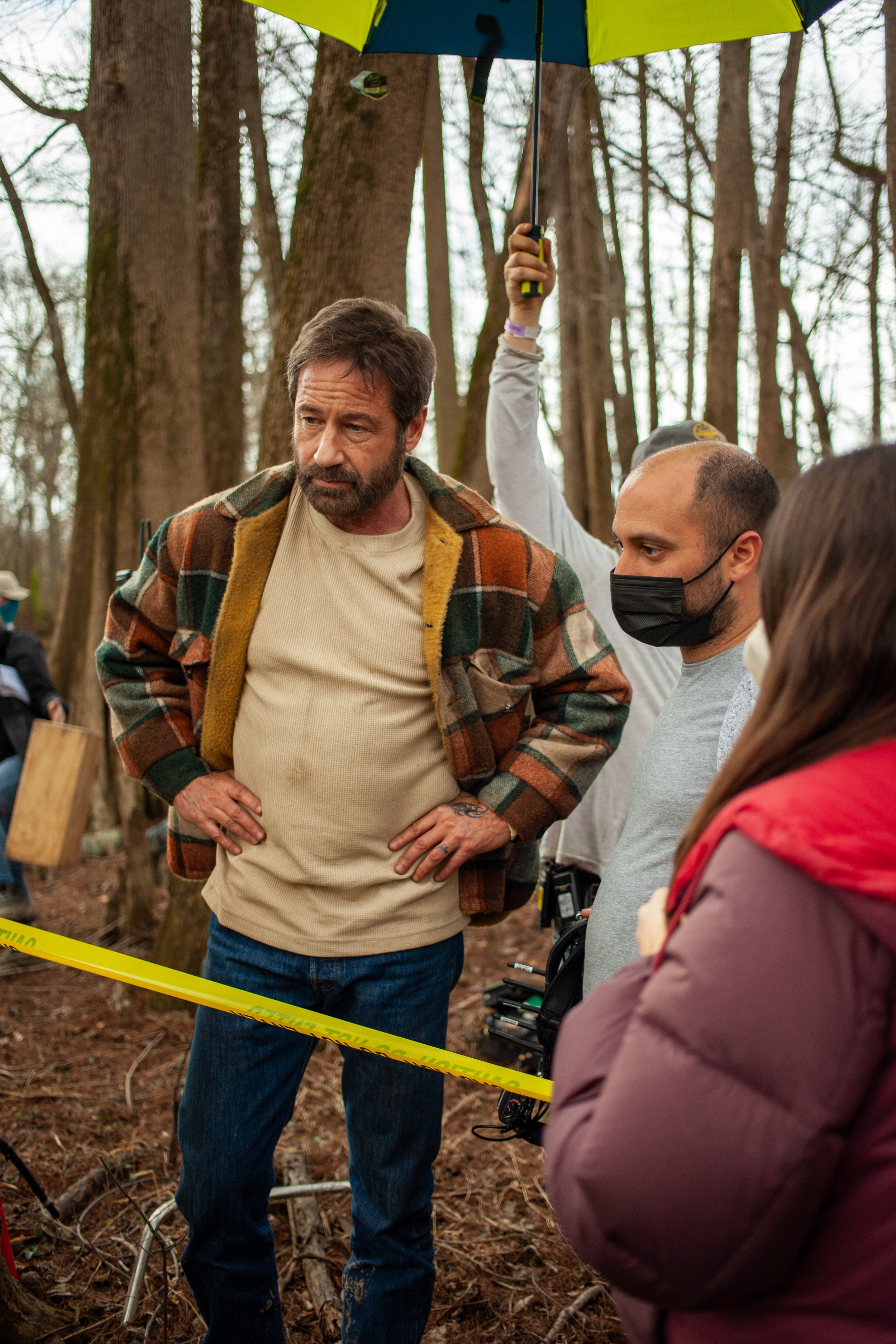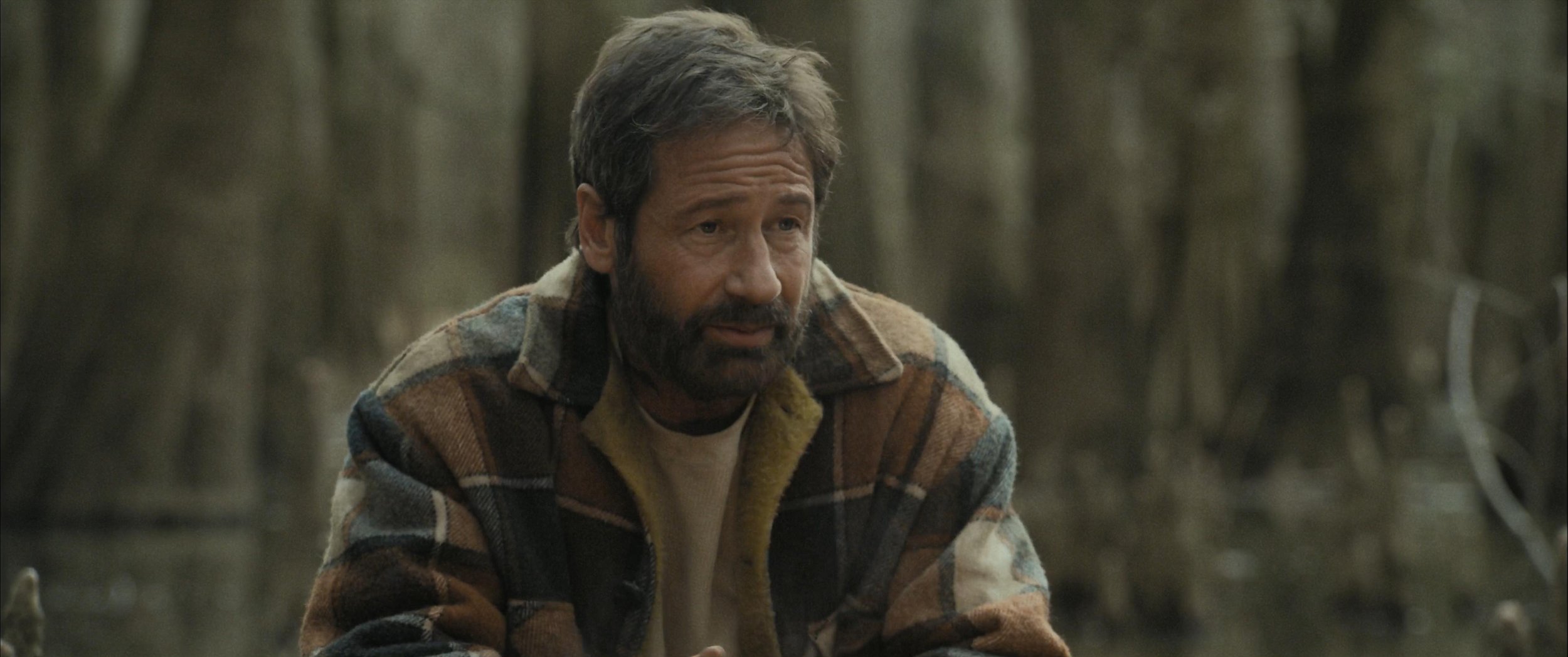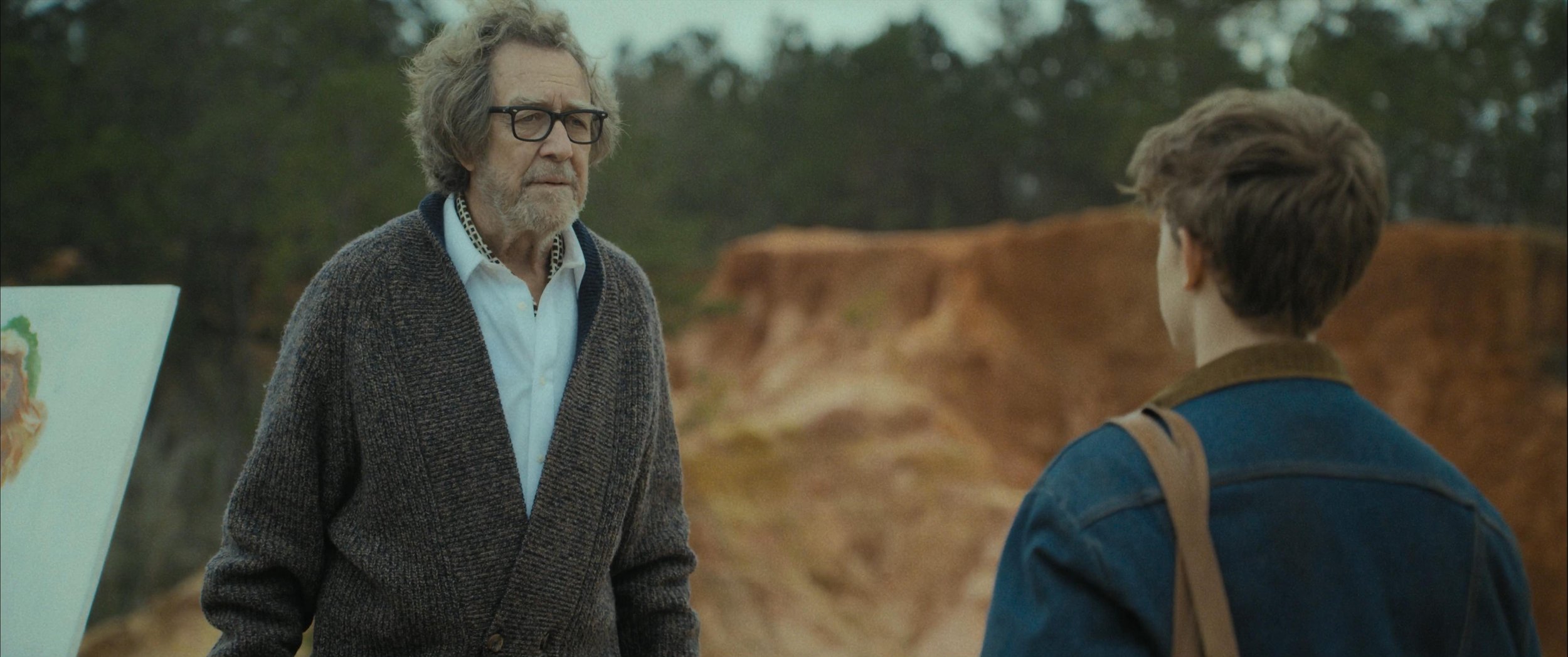MOVIE REVIEW: Adam the First
ADAM THE FIRST– 4 STARS
Painfully so, Adam the First begins with a scene where a young child’s view of the world is shattered. A middle-aged man named James, played by an unostentatious David Duchovny, has pulled aside Adam to talk at a daytime campfire among the cypress tree swamp forests of Mississippi. Adam couldn’t be older than 6 or 7 at this moment. With the kid’s attention, James plainly states that he is not the boy’s father. The chat deepens and the film’s dramatic growth, written by Irving Franco, starts then and there among the crackling embers and whispering insects.
LESSON #1: IMPORTANCE OF FATHER-FIGURES– Part of James’s message is a reassuring promise to balance his jarring “feel better knowing that” punch of truth. James pledges to continue to care for him, raise him up, and teach him the ways to survive in the world. For all intents and purposes, James is a proper father figure, even with the cigarettes, tattoos, and the first fringe signs of his podunk habitat lacking typical amenities. The boy listens to his every word, just as he should to a man doing the work of a father.
Nonetheless, Adam, even at his tender age, reads the tone of James’s talk and assumes the worst. He asks if his real father did bad things, as if he was part of the problem and why he was, as James declares, left in the woods as an infant after his birth mother died. James quickly assuages the boy and commends Adam on how he is different, smart, curious, and good as to not turn out that way. He gives Adam a compass he was found with, symbolically planting another seed to his eventual heartland odyssey.
When Adam the First moves time forward, Adam (Oakes Fegley, all grown up from Wonderstruck and Pete’s Dragon) is a teen with a lit cig on his lip just like James and trapping rabbits for dinner. He lives with James and Mary (TV actress Kim Jackson Davis), the woman he has come to call Mother, in a dilapidated Four Winds trailer off the grid. When Adam is forced to flee, James gives him an old note with three potential matches of Adam’s birth father going by the name of Jacob Watterson.
LESSON #2: KNOW WHO, WHAT, AND WHERE YOU CAME FROM– Going back to James’s earlier line of “feel better knowing that,” his long-kept note of potential locations to Adam adds more honesty by ending with the catalyst statement of “You have every right to find him.” Mature beyond his years and extremely resourceful, Adam was already a step or two beyond passing curiosity and now has a swelling feeling of determination. The investigation lying before him defines his very existence, a fact not lost on him or the film itself.
Adam the First progresses patiently to build up each of the three Jacob Watterson revelations coming ahead for Adam. Cinematographer Daniel Brothers (who also shot Miller’s Girl this winter) deftly relied on lovely outdoor photography to grace rural locations and the occasional domestic interiors with clarity and softness. The pulse of Adam’s quest is paced by a pitch-perfect fusion of bluegrass and natural jazz shifts by Michale Grazi and Franco himself. The polish level is intentionally low, but never murky or forced as a means to be dirty for the sale of hiding moviemaking glamor. In different hands than Franco’s, some haughty filmmaker would want everything bigger and louder, turning Adam the First into a sprinting rat race. Calling this an “adventure” is unfitting. Disquiet serenity wins out instead.
Narratively, like life, there are few shortcuts. Adam’s course of travel required help from unlikely benevolent strangers– like a stripper and a migrant worker smuggler to name a few– often on their own private treks. Those supporting characters are key proxies that mirror the little chips of luck and fate that have to fall right for success, yet still exist with a sense of challenge. These encounters– as well as the crucial introductions to the three fatherly candidates– became prime stages for Irving Franco (in only his second feature film after 2016’s Cheerleader) to flesh out engaging conversations.
LESSON #3: MAKE YOUR CONVERSATIONS COUNT– For Adam to approach these strangers with his “I’m looking for my father” story and burning questions, it takes a sit-down. That kind of talk can’t be rushed and Franco lets those opportunities fully breathe. Moreover, each of the important exchanges create their own emotional transitions for Adam. He needs every springboard he can get from these talks, and so does Oakes Fegley playing the character. The 19-year-old actor fulfills the promise of his youthful success and stoutly persists in never backing down from the dramatic moments while absorbing all the wisdom shared back in his direction.
For example, when the first Jacob Watterson is a jailed strip club owner (Big George Foreman’s Eric Hanson) and dead-end, a sense of anger begins to fester within Adam. The kid is not flipping out or shedding tears, but he’s hurt. This Jacob senses it through the prison phone booth partition and offers one part advice (“Make sure he explains himself”) and one part fuel to the fire (“Let him have it”). By the time Adam reaches the third Jacob Watterson, a traveling senior artist (Wes Anderson mainstay Larry Pine) too old to be his biological father, the restlessness and unsettled feelings are called out again, and Fegley meets that test with defiance protecting grace ready to come out.
Even though Adam the First may look and feel like a meandering melodrama without a specific date marker to declare its present day, nothing about the time it spends feels wasted or aimless. If anything, its timelessness gives the movie a universal fit with the always-relevant struggle of people finding their real families. At its core, the absolute strength comes from Irving Franco to script this intimate campaign and the bravery to direct it without kinetic temptations to rush anything. His brilliantly conceived and beautifully acted conversation set pieces– from Duchovny’s formative first one to a heartrending pair from an unexpected source (Grey’s Anatomy’s T.R. Knight) that close the final ten minutes of the movie– gradually increase the storytelling weight and the resulting well-earned empathy is undeniable and tremendous.
LOGO DESIGNED BY MEENTS ILLUSTRATED (#1174)


